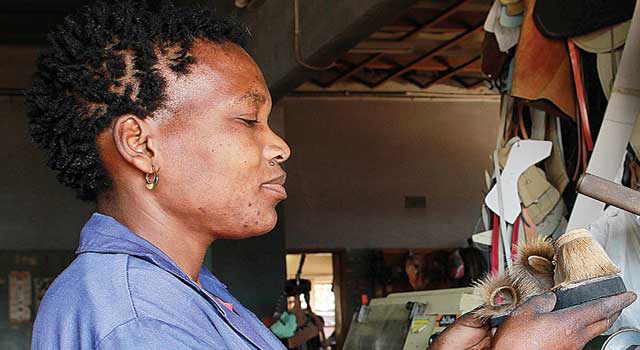At full capacity, Botswana’s leather industry has potential to create 10,000 jobs, fulfill local demand for leather and earn the country up to $150 million in export earnings. This was revealed by Dr Chandra Babu, chief scientist at the Central Leather Research Institute (CLRI) during a stakeholder consultation workshop on the leather industry hosted by the Local Enterprise Authority (LEA) last week.
As part of efforts to harness Botswana’s leather industry value chain, LEA engaged experts from India in 2011 to conduct a thorough analysis of Botswana’s leather industry and make recommendations that will inform establishment of a leather park in the country. Budgeted at P4million, the feasibility study later made recommendations for implementation of the leather park project. In September this year LEA contracted CLRI, an Indian Research Center, to conduct a viability study on the leather industry. The study is anticipated to be completed by end of December, and is expected to assess industry issues and give an informed opinion on whether or not the leather park will deliver returns.
At the stakeholder consultation workshop, LEA sought input from stakeholders and industry captains, as well as recommendations that will inform the way forward. It is expected that CLRI will use the information garnered from the stakeholder engagement seminar to buttress the outcome of the research.
Presenting at the seminar, Dr Babu expressed concern about a number of challenges such as lack of technology for the leather industry and differing production statistics that might affect the accuracy of information. He also recommended that export of raw hides should be discouraged by imposing higher duties and called for concerted and efficient collection of raw materials in anticipation for the leather park.
He also revealed that the study will assess cost of the project, evaluate financial models and review policy and institutional support.
“We have been doing a lot of work and we are left with two stages that entail developing a framework for the leather park and compiling a detailed feasibility study,” he said.
On the other hand, the industry raised concerns about limited political will in making decisions on industry issues and conflicting government policies that constrain a flourishing leather manufacturing industry. The seminar also interrogated four models for creation of the leather park that were proposed by CLRI. Each model was interrogated to establish its threats and practicality. CLRI is expected to use insight provided by industry captains to recommend the appropriate model to be used in establishing the leather park.
With its vast untapped potential the leather industry could boost Botswana’s economic diversification drive and help alleviate poverty. Botswana already has a flourishing cattle industry whose skins and hides are not processed locally but are exported raw with very little value addition. A study conducted in 2008 established that Botswana’s import bill for leather and leather products was more than P151m while the export bill stood at P46m.

